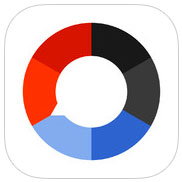
Microsoft is giving its SkyDrive cloud storage service a makeover that will include new apps and greater synchronization abilities across mobile and PC devices.
The new service includes SkyDrive for the Windows desktop, so it can be managed right from Windows Explorer or from SkyDrive.com. Users can grab the files directly from Windows Explorer and add them to the SkyDrive folder. Anything put in the virtual locker is automatically synced.
Users will also be able to access SkyDrive from from Windows Phone or iOS devices, and also from the Finder in Mac OS X Lion. Microsoft didn’t mention an Android app, although it does include suggestions for third-party apps that will access Google’s platform.
The revamped SkyDrive comes with changes in availability, as well. Previous users had 25 GB of free storage, but new users will have 7 GB free. They can purchase another 20, 50 or 100 GB for US$10, $25 or $50 per year, respectively. Microsoft announced it’s rewarding its users that were already using SkyDrive as of April 22 by allowing them to opt in to keep the 25 GB of free space. If a user had already uploaded more than 4 GB, they’re automatically opted in.
The 7 GB of space is enough for 99 percent of its users to store their Office library and photos, Microsoft pointed out in the blog post announcing the updates.
Microsoft didn’t respond to our requests for comment on the changes.
Making Changes
The new features, especially the improved ease in file synchronization across multiple platforms, makes Microsoft’s service more similar to some of its competitors in the virtual storage market, said Krishnan Subramanian, principal analyst at Rishidot Research.
“The biggest change is the move away from the browser to a more software based approach like Dropbox and others,” Subramanian told TechNewsWorld.
With that switch to the software-based approach, though, Subramanian said he’s surprised that Microsoft didn’t continue to offer 25 GB of free storage, or at least more than 7 GB. When users could only store via the browser-based interface, they were likely to come up with less than 7 GB, but now they’ll be looking for more, he said.
“With a software-based sync, the pattern will completely shift,” he said.
“With storage being cheap, Microsoft could have continued to offer 25 GB free offering. It would have been very attractive, especially with the software-based sync they offer for Windows and Mac devices.”
Tough Competition
With tough competition in the cloud storage space, offering the extra storage could have been a big way to gain, said Subramanian.
“I would have loved to see them use the 25 GB free offering as a way to lure users to their service. Such a strategy would have wiped out all the challenges they face as a late mover,” he said.
But Microsoft isn’t the only late mover. On Tuesday, Google officially launched its Google Drive storage service. Meanwhile, Sony and Samsung are expected to launch cloud services soon, and they’ll take on leaders in the space such as Dropbox.
“There is a reason for everyone jumping into this market,” Larry Carvalho, owner of RobustCloud, told TechNewsWorld.
“The ability for cloud storage providers to access stored data gives them a gold mine of information. This could be utilized to specifically target users whenever these digital assets are accessed. Providers gain a valuable source of new advertising revenue,” he said.
With Microsoft counting on Windows 8 to increase sales, it’s especially crucial it gets into the cloud space, said Subramanian.
“This becomes especially important as Microsoft is trying hard to gain marketshare with Windows phones,” said Subramanian. “It becomes imperative for them to have a cloud storage strategy that spans multiple devices and platforms. This announcement is in sync with this strategy.”
Even though the big tech players realize they can’t sit out on cloud storage, they’re entering into a pretty tough market, said Carvalho. Once a mainstream user is committed to a certain storage space, they’re unlikely to switch or complicate matters by trying to manage two or three virtual lockers. But while Dropbox already has a loyal following, it also has a weakness compared to competitors that have already built an online infrastructure.
“The challenge that Dropbox has is there are no supporting apps that surrounding it like e-mail and search — advantages that Gmail and Google and Hotmail and Bing have,” said Carvalho. “Only time will tell if SkyDrive can dangle a big enough carrot prompting users to convert.”




















































